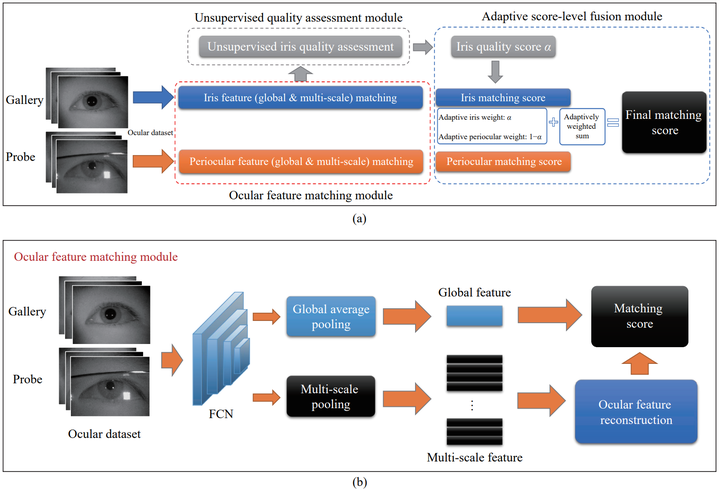Boosting multi-modal ocular recognition via spatial feature reconstruction and unsupervised image quality estimation
 Illustration of the whole framework
Illustration of the whole framework
Abstract
In the daily application of an iris-recognition-at-a-distance (IAAD) system, many ocular images of low quality are acquired. As the iris part of these images is often not qualified for the recognition requirements, the more accessible periocular regions are a good complement for recognition. To further boost the performance of IAAD systems, a novel end-to-end framework for multi-modal ocular recognition is proposed. The proposed framework mainly consists of iris/periocular feature extraction and matching, unsupervised iris quality assessment, and a score-level adaptive weighted fusion strategy. First, ocular feature reconstruction (OFR) is proposed to sparsely reconstruct each probe image by high-quality gallery images based on proper feature maps. Next, a brand new unsupervised iris quality assessment method based on random multiscale embedding robustness is proposed. Different from the existing iris quality assessment methods, the quality of an iris image is measured by its robustness in the embedding space. At last, the fusion strategy exploits the iris quality score as the fusion weight to coalesce the complementary information from the iris and periocular regions. Extensive experimental results on ocular datasets prove that the proposed method is obviously better than unimodal biometrics, and the fusion strategy can significantly improve the recognition performance.